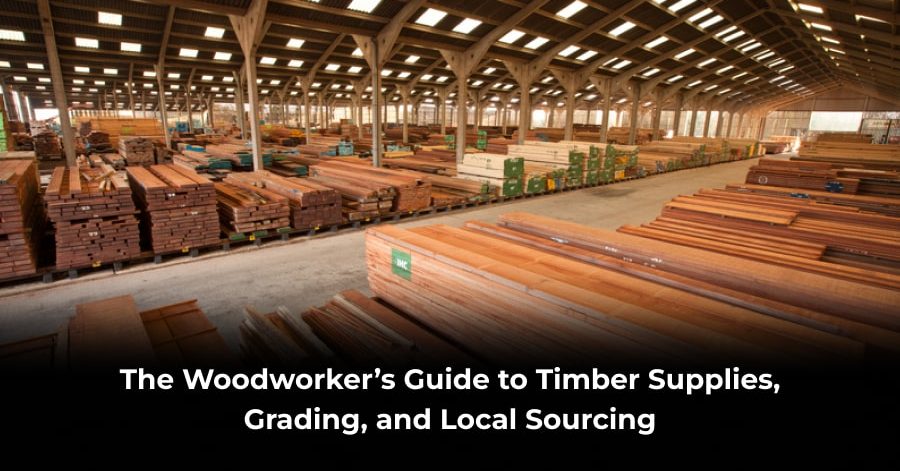Introduction
Whether you’re a hobbyist building custom shelves or a professional crafting fine furniture, the quality of your timber defines the outcome of your work. From structural strength to finish aesthetics, choosing the right woodworking timber supplies is essential. But how do you know if the wood you’re using meets the required standards? That’s where understanding the wood grading system and knowing how to source from trusted woodworking supplies stores near me becomes critical.
In this guide, we’ll explore how to assess wood quality, decode grading labels, and find reliable local suppliers to ensure your project begins with the best materials possible.
Why Timber Quality Matters in Woodworking
Before diving into grading systems or store options, it’s important to understand why high-quality timber is so important.
Poor-quality wood can:
- Warp or crack after assembly
- Refuse to hold screws or joints
- Have inconsistent grain patterns
- Fail to take stains or finishes evenly
In contrast, well-graded woodworking timber supplies provide:
- Dimensional stability
- Workability for machining and cutting
- Consistent appearance
- Durability and longevity in the finished product
Whether you’re building tables, doors, cabinetry, or outdoor structures, the right timber makes all the difference.
Understanding the Wood Grading System
The wood grading system is a standardized way to classify timber based on its physical and structural characteristics. It helps you determine the right wood for each specific use.
Two Major Categories:
- Appearance Grades – For wood used where looks matter (e.g., furniture, flooring)
- Structural Grades – For load-bearing applications (e.g., beams, framing)
Common Grading Terms:
- Select Grade: Virtually defect-free, used for high-end cabinetry or visible finishes.
- #1 Common: Contains small knots; suitable for furniture and general woodworking.
- #2 Common: More defects; ideal for utility or rustic aesthetics.
- Construction Grade: Graded for strength rather than looks; often used in framing.
Knowing how to read and interpret these grades ensures you’re not overpaying or using substandard wood in a critical project.
How to Evaluate Wood in Person
When visiting woodworking supplies stores near me, here’s what to look for:
- Straightness: Avoid warped or bowed boards
- Grain consistency: Consistent grain indicates good processing and aesthetics
- Knot placement: Occasional small knots are acceptable, but avoid loose or large ones
- Moisture content: Ideally between 6% to 8% for indoor furniture
Stores that carry well-dried and accurately graded woodworking timber supplies are more likely to stock wood that’s ready for use.
Benefits of Buying from Woodworking Supplies Stores Near Me
Finding reputable woodworking supplies stores near me can offer advantages over generic hardware chains or online platforms.
Key Benefits:
- Touch and inspect wood before purchase
- Ask for expert advice on selection and application
- Custom cutting services often available
- Support local businesses and reduce shipping costs
A good local store will also help you understand the wood grading system better by labeling timber clearly and explaining differences between grades.
What to Look for in Woodworking Timber Supplies
Sourcing the right woodworking timber supplies isn’t just about picking a type of wood—it’s about quality assurance.
Here’s what reliable timber supplies include:
- Species variety: Access to hardwoods (oak, maple, walnut) and softwoods (pine, fir)
- Standardized sizing: Timber should be clearly marked by length, width, and thickness
- Grading visibility: Grades must be stamped or labeled by the mill or distributor
- Proper storage: Wood should be kept indoors and flat to avoid warping
Suppliers who meet these criteria demonstrate a commitment to quality and consistency.
Matching Timber Grades to Projects
Here’s how to use the wood grading system effectively by aligning grades with project types:
| Project Type | Suggested Grade | Reason |
| Furniture (Visible Finish) | Select or #1 Common | Smooth, attractive, minimal defects |
| Outdoor Furniture | #2 Common or Construction | More rustic, high durability |
| Framing / Structural Use | Construction Grade | Focus on strength, not appearance |
| Flooring / Paneling | Select or Clear Grade | Needs consistent grain and finish quality |
When in doubt, consult the staff at trusted woodworking supplies stores near me—they can recommend the right grade based on your project and budget.
Avoiding Common Mistakes When Buying Timber
Even experienced woodworkers can fall into traps when sourcing wood. Here are the most common mistakes:
- Not checking grade labels: Always confirm the wood grade aligns with your project’s needs.
- Ignoring moisture content: Wet wood may shrink, split, or warp after installation.
- Focusing only on price: Cheap timber may have defects that cost more in repairs later.
- Overlooking grain direction: Grain affects strength and how wood absorbs finishes.
A reliable supplier of woodworking timber supplies will ensure you get not just wood—but the right wood.
Bonus: What About Online Timber Buying?
While local stores offer hands-on access, online platforms are growing in popularity.
If you can’t find reliable woodworking supplies stores near me, online shopping can be a backup—but check for:
- High-resolution product images
- Detailed grading explanations
- Return policies and damage protection
- Verified customer reviews
Still, for first-time buyers or high-budget projects, visiting a physical store is highly recommended.
Conclusion
In woodworking, your results are only as good as your materials. Learning to navigate the wood grading system, evaluate woodworking timber supplies, and find trustworthy woodworking supplies stores near me is an essential skill for professionals and DIYers alike.
A store that knows its timber, labels it accurately, and stores it responsibly can be your greatest project partner. Whether you’re building a dining table, installing custom shelving, or framing a home structure, let the wood you choose be the strongest foundation of your craftsmanship.






